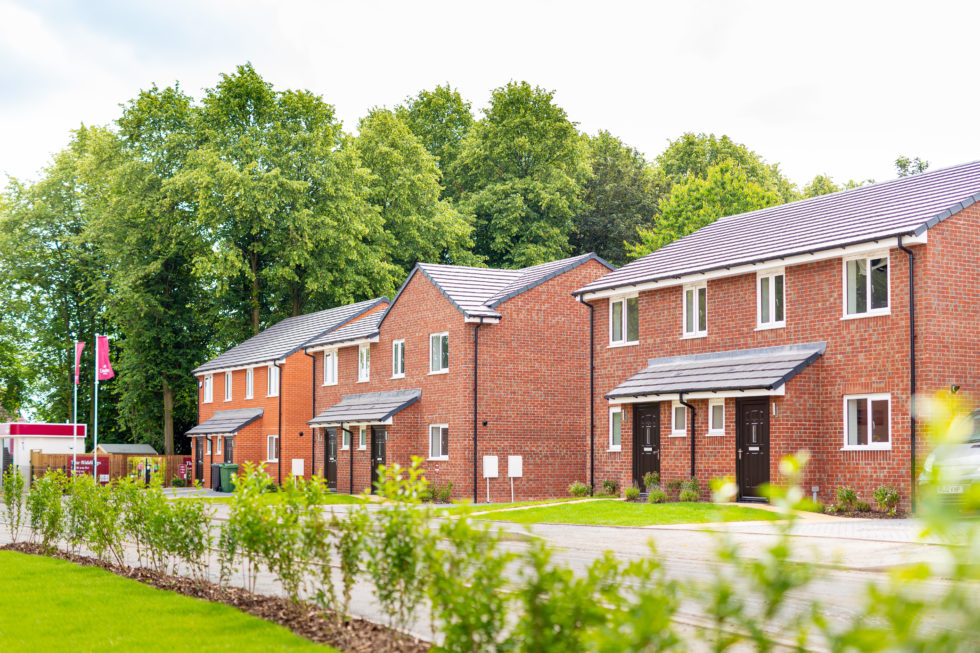20 September 2022
REACT News feature: Housebuilder gloom contrasts with brightening outlook for rented sector

A gloomy analyst note from HSBC, the takeover of Countryside, a profit warning from Inland Homes and financial results from four other leading housebuilders – it has been a busy start to September for the housebuilding sector.
The flood of news comes at a time when the dynamics of the housing market are changing. House prices sit at record highs as do housebuilder profits, but with interest rates rising and the cost of living crisis starting to bite, few expect the good times to keep on rolling.
But just how bad are things going to get? And how will a weaker housing market and tougher operating environment for the housebuilders impact the build-to-rent market?
As cost of finance rises, the BTR market is feeling some of the same pressures, but critically it is also benefiting from soaring rental growth. To unpick what it all means, we look to answer some of the key questions facing the residential market.
Is a slump in house prices inevitable?
House prices have so far held firm in the face of rising interest rates – they even nudged up a fraction in August, according to the Halifax House Price Index. But cracks are beginning to emerge. Last week’s RICS UK Residential Market Survey showed a drop in new buyer enquiries for the fourth month in a row, with buyer sentiment now at its weakest level since the start of the pandemic.
And financial results from Vistry, Barratt Developments, Redrow and Berkeley indicate that the market is becoming tougher, albeit not to the point where housebuilders are cutting prices to attract buyers.
“While incentives appear to have stepped up a little and fewer customers converting to reservation, net pricing remains ahead of budget albeit with some slowing momentum,” said analysts at investment bank Jefferies, in a note summarising the key takeaways from the results.
For now, lack of supply is helping to prop up prices, but continued rate increases and high inflation will put house purchases out of reach for many unless prices fall.
Some commentators still predict that prices will continue to rise thanks to lack of supply, but a growing contingent of independent forecasters are predicting significant decreases. Capital Economics predicts a 7% decline over two years as a “best case scenario” and analysts at HSBC forecast that prices will decline 15% in London and 7.5% outside.
Housebuilder shares have slumped this year, typically by around 40% so that most are now trading at lows last seen at the start of the pandemic or in the immediate aftermath of the Brexit vote. This would suggest that those predicting price falls are on the money – although the last two times housebuilder shares slumped, they soon bounced back as gloomy predictions proved overly pessimistic.
Cost of signing government’s fire safety pledge
Vistry, Redrow and Barratt shone a light on the costs developers are having to shoulder by signing up to the government’s voluntary building safety pledge. Under the agreement, they promised to fix all buildings over 11 metres tall that they have an involvement in.
Barratt, which is the nation’s largest housebuilder with revenues over £5bn, recognised an additional provision of £396m during the financial year to meet the cost of signing the pledge. Redrow set aside £200m in provisions and Vistry an additional £71.4m.
Would a fall in house prices hit BTR values?
A fall in build-to-rent values is by no means an inevitable consequence of falling house prices. Rents have a bigger influence on BTR values than house prices, and the good news for investors is that rental growth levels are increasing rapidly.
Rental growth has accelerated from less than 2% in July 2021 to 12.3%, according to data out this week from Zoopla, which blamed “a chronic shortage of properties”. This shortage could become even more acute. If house prices fall and the for-sale market slows, more people will be pushed into the private rental sector, putting demand and supply further out of kilter.
Increasing rents should help support BTR values, which are also being propped up by continued investor interest in the sector. Some leveraged investors seeking higher returns are struggling to make their numbers stack up due to rising debt costs, but this is being compensated for by the influx of investors with a lower cost of capital.
“I don’t see yields moving out. There’s just too much money chasing the sector,” says Andrew Screen, BNP Paribas Real Estate’s head of residential capital markets.
Other agents are similarly bullish. CBRE’s head of residential capital markets, Andrew Saunderson, predicts that 2022 will be a record year for investment into UK BTR driven by growing investor demand and soaring rents.
However, amid the positivity, there are some notes of caution. Affordability constraints may put a cap on rental growth.
The sector is also not immune to the impact of rising bond yields. As well as increasing costs for leveraged buyers, they affect the relative attractiveness of the sector for other investors who may start to see more compelling opportunities elsewhere.
And under RICS guidance, valuers are instructed to consider the break-up value of BTR schemes, which would be impacted by falling house prices.
However, overall, the prospects for BTR look better than they do for other sectors thanks to sharply rising rents, even if it is not immune to the deteriorating economic outlook.
This is reflected in the share price performance of the UK’s largest listed residential landlord Grainger. Shares in the FTSE 250 company are down about 15% so far this year, which is a significantly more modest decline than most other REITs and housebuilders have experienced.
Given the relative attractiveness of BTR, it is no surprise to see Norway’s sovereign wealth fund Norges up its exposure to Grainger, increasing its stake from about 7% to 9% over the summer.
Are housebuilders likely to seek more deals with BTR investors?
Aside from housebuilders who have set up dedicated “partnerships” businesses to strike deals with BTR investors, housing associations and others, housebuilder interest in bulk sales has been limited until now.
The buoyant housing market has given them every incentive to focus on their core business of selling homes to the general public. But as the market starts to slow and the outlook becomes more challenging, that is beginning to change.
“My phone has been ringing more than it was six months, and indeed more than it was three month ago,” says Jonathan Ivory, managing director, single family homes at Packaged Living.
One of the biggest challenges for the nascent single-family home market is building platforms of a meaningful scale. In some ways, the current market dynamics could therefore be a win-win, helping investors grow portfolios more rapidly than would previously have been possible and providing a new source of demand for housebuilders as the market slows.
“My phone has been ringing more than it was six months, and indeed more than it was three month ago”
JONATHAN IVORY, PACKAGED LIVING
However, getting deals agreed will not be easy. Investors will be mindful of the uncertain outlook and unwilling to progress deals without sufficient downside protection in the form of a discount to vacant possession value, but at the same time, housebuilders will be reluctant to accept discounts that would eat into their margins.
Was the potential of rental a factor in Vistry’s acquisition of Countryside?
Countryside’s multi-tenure model was a key attraction for Vistry, which already has an established business called Vistry Partnerships that partners with local authorities, housing associations and investors.
Announcing the deal last week, Vistry said buying Countryside would increase its partnerships exposure, offering “greater resilience to the cyclicality of the housing market, with increased earnings visibility”.
It added that if the market does not recognise the full value of the combined group by 2025, the partnerships and more traditional housebuilding arms would be large enough to separate them.
Will multi-family fare any differently to single-family?
It is difficult to say which subsector will perform better in a higher inflation, higher interest rate environment. Ivory makes the case for single-family housing, arguing that demand is likely to be particularly strong.
“Single-family residents are more inclined to buy because they are older and have put down more roots, but going forward, there is going to be less ability for them to buy because of the increased cost of finance,” he says.
Rising finance costs may also have more of an impact in the multi-family sector due to the longer construction lead times.
However, single-family remains a more nascent sector and comes with its own challenges around managing portfolios that are typically spread out geographically. Many investors will continue to prefer multi-family where there is a more established body of evidence showing how different assets perform.
Originally written and published by Guy Montague-Jones of REACT News.


